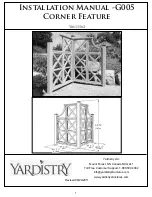
◇
43
4.4.8
Current over limit and arc detection (ARC) function
Current over limit is divided as:current low and high limit, current range over limit,
arc detection.
Current low limit judge (LOW): generally for judging low terminal break.
When instrument tests device, there must be a certain leakage current,
when the leakage current is smaller than the set current value, it means
fail, if the leakage current of DUT is quite small, then it is not necessary
to turn off the function. It displays (LOW FAIL) if past the limit.
Current high limit judge (HIGH): When instrument tests device, there
must be a certain leakage current, when the leakage current is larger than
the set current value, it means fail. It displays (HI FAIL) if over limit.
Current range over limit (RNGE): current sampling judge is slow, and
sometimes the current changes quickly so that sampling circuit can’t
detect, however, if current has passed the range of current test, it would
trigger the over limit judge. It displays (RNGE FAIL) if over limit.
Real current high limit judge (REAL): DUT is considered as capacitive,
and the capacitor takes current in AC test. When the capacitive change is
big, then the capacitive current has nothing to do with the test result, now
you can select real current judge which only judges the current of same
voltage phase. It displays (REAL FAIL) if over limit.
(ARC): It is a practical function in
component test, which tests the instant
partial discharge of high voltage. Because
the speed of partial discharge is quite fast,
and the filter coefficient of common current
detection circuit is so large, it can’t make a
suitable judge, so use this specific circuit
to deal with the change of fast current
pulses.
Current over limit judge and frequency response contrast of arc detection (in the
figure above):
Zone A: current response of current sampling display, the power ripple
10
100
1k
10k
1M
100k
B
C
A
















































